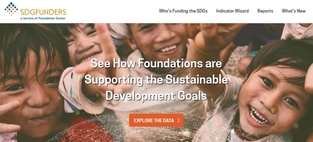Self-Determination and the Indigenous Why it Matters to Funders
“Self-determination and sovereignty over their natural resources are central issues to indigenous peoples who often follow systems of governance developed thousands of years ago," said Gregory Ch'oc, former executive director of SATIIM in Belize.
Like land rights, self-determination is an umbrella term that covers central concerns of indigenous peoples, from the right to educate their children in their native languages to control over natural resources. It is also a highly contentious issue, since self-determination can extend into the realm of national sovereignty. For example, even when governments recognize ancestral lands, they often stipulate that the national government still owns the subsoil— which is critical when they want to drill for oil or mine on indigenous territories.
The UN Declaration on the Rights of Indigenous Peoples (UNDRIP) is an international instrument that delineates the rights of indigenous peoples. UNDRIP explicitly addresses a key issue of selfdetermination: the obligation of governments and corporations to obtain the free, prior, and informed consent (FPIC) of indigenous communities for any project on their land, “particularly in connection with the development, utilization, or exploitation of mineral, water or other resources.” The principle of free, prior, and informed consent refers to the right of local communities to give or withhold their consent to projects that may affect their territories. Free refers to consent given voluntarily, without manipulation, intimidation or coercion. Prior refers to consent that is given before the project activities start. Informed implies that communities have received complete information about the project, its location, duration, costs, risks, and impacts.
This last point on the right to decide what happens on their lands has the power to increase indigenous community control over their lands and natural resources. In coming years, indigenous communities will test its strength and limits to protect their right to self-determination, particularly when they oppose external plans for their lands, such as extractive industry projects and large-scale mono-cultivation.
While the UNDRIP is not legally binding, indigenous communities, such as the Maya in Belize, have used it in domestic courts to hold governments that signed it to their word. “In the best case scenario, indigenous peoples will be able to negotiate better, but they’ll also be able to say no to development projects they don’t feel will be beneficial to their communities,” said Brian Keane, advisor on indigenous peoples issues at the U.S. Agency for International Development (USAID).
Takeaways are critical, bite-sized resources either excerpted from our guides or written by Candid Learning for Funders using the guide's research data or themes post-publication. Attribution is given if the takeaway is a quotation.
This takeaway was derived from Funding Indigenous Peoples.


